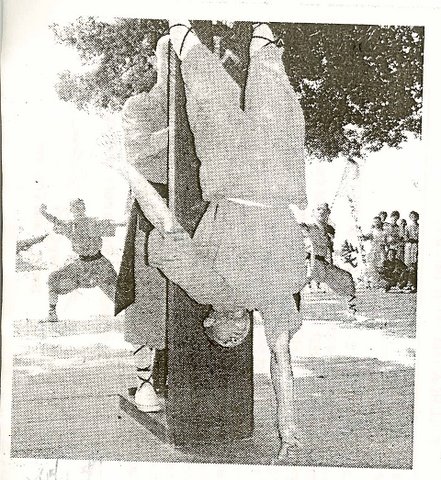When you learn how to move, many variations start to become available to you. The transition between your limbs becomes an art form.
Lets take hand balancing at two of its base variations. The handstand itself and cartwheel. These are the two inversions that we all tend to start with. I’d wager that a good amount of us began with the cartwheel before the handstand because it gave us a clear pathway to return to.
A good way to test your movement capability is to run through different planes of motion. A more difficult possibility move from the cartwheel would be the Front Walkover. If you look below you’ll see a composite picture of Diane Robinson performing the move with ease.
A vintage magazine called Acro-Chat lays down some quick instructions for you. The correct way to do a two arm walkover. Notice the arms are straight all the way through, the legs are extended and split as much as possible, the back is arched tightly with the head and arms trailing as she stands upright.
Now a word of caution, this move does take a large amount of flexibility in both the back and legs. Although its not dangerous, you might end up falling a couple of times in the beginning.
You can also perform a back walkover which is done moving backwards. Just follow the pictures from right to left and you’ll get the idea.
Quick note: These moves are not to be confused with the handspring or back handspring. Though the motion is much the same, except for going off of two legs instead of one, there is another big difference. Your hands will touch the ground before both your feet leave it in a walkover. Handsprings involve leaving the feet to get up in the air before your hands touch down.
If you tested the front walker and see that it might be out of your range, try experimenting with different movement patterns to increase your acumen. If you still need help, try picking up the Gold Medal Bodies Vitamin Program!
Stay Inverted!
-Jonathan Magno
















